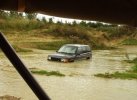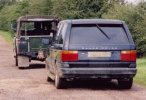I can't see the car you're helping out there  Hope they didn't mind being towed through that big puddle
Hope they didn't mind being towed through that big puddle 
I had imagined the story to look much worse in reality but then I've never attempted any of this in mine (not yet anyway) so I've no room to comment! I admire the attempt all the same, it's how we find limits.
I had imagined the story to look much worse in reality but then I've never attempted any of this in mine (not yet anyway) so I've no room to comment! I admire the attempt all the same, it's how we find limits.
1000€ in parts dudeI can't see the car you're helping out thereHope they didn't mind being towed through that big puddle
I had imagined the story to look much worse in reality but then I've never attempted any of this in mine (not yet anyway) so I've no room to comment! I admire the attempt all the same, it's how we find limits.
Graculus
Well-Known Member
US Tire (tyre) labels are like that, they don't want to confuse the locals - seriously, the NTSA specified a lot of years ago that there should be only one tyre pressure specified, so, given the typical vehicle load (lard?), all manufacturers went with the higher figure.That's the US spec sticker (look at the spellings).
Looks like they only show the pressures for full load too, can't see the logic there unless it was an amendment for later cars as the OP sticker is dated 2004.
Graculus
Well-Known Member
Airing up & down is a 'feature' of overlanding - there is no 'one pressure' that will do. I've run L319's in Morocco at 0.8Bar, then 2.8Bar 5km's further on.... There are a lot of variables, tyre construction, surface, vehicle load, expected journey length etc. The realities are:- preserve your tires & rims, they're the bits that keep you moving. Changing pressures as the terrain changes is to be expected, as are punctures. Tread punctures are fixable, sidewall punctures generally are not. Be aware of what's under and to the sides of your tyres, don't overheat them and check the inside sidewalls, not just the outside ones.Not too soft, not too hard
Graculus
Well-Known Member
Back to the OP's question, from Nokian's website:-

 www.nokiantyres.com
www.nokiantyres.com
So it would seem best to run at the pressures on the tyre placard, remembering to use standard or loaded values as appropriate.
Instructions to check the inflation pressures.
1. The correct inflation pressure is provided in the owner's manual of your car.
2. Remember that temperature affects pressures: in cold weather, the pressure needs to be higher than in higher temperatures.
3. Never adjust the pressure immediately after driving, because driving heats up the tyres.
4. Remember to check the pressure on your spare tyre regularly too.

Check tyre inflation pressure / Nokian Tyres
Instructions to check the inflation pressures. The correct inflation pressure is provided in the owner's manual of your car.
So it would seem best to run at the pressures on the tyre placard, remembering to use standard or loaded values as appropriate.
Surely he would be better to do what us Brit's do as we know best 

